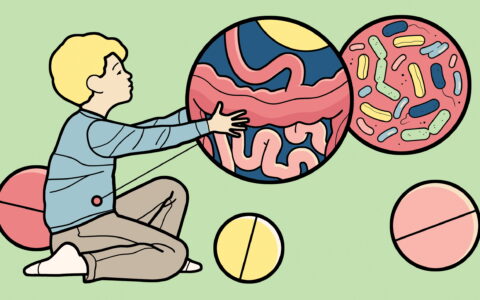Alpha-gal syndrome (AGS) is an immunoglobulin E (IgE)-mediated reaction to galactose-α-1,3-galactose, a type of sugar in animal meats, and is often transmitted in the Eastern and Southeastern United States by the lone star tick (Amblyomma Americanum).
People with AGS who ingest non-primate mammalian meats – like beef, pork and lamb and their products – typically experience an allergic reaction with rashes, hives and facial swelling. However, a primarily gastrointestinal (GI) phenotype of AGS has also been documented in adults. Despite increased awareness of AGS in pediatric populations, a GI phenotype has not yet been described.
To address this, pediatric gastroenterologist Maribeth Nicholson, M.D., at Monroe Carell Jr. Children’s Hospital at Vanderbilt, led a retrospective study of patients presenting to the pediatric GI clinic with abdominal symptoms. These patients had been tested for, and some diagnosed with, AGS. She worked with allergist Cosby A. Stone Jr., M.D. and first author, gastroenterology fellow Jordan Busing, M.D. The study was published in .
“In AGS, the response is delayed by 2 to 8 hours and there can be GI symptoms in isolation, which can confound diagnosis.”
The group was in a strong position to lead the study since Middle Tennessee is endemic for AGS due, in part, to a large population of deer – the tick’s primary host.
“Most IgE-mediated food allergies present pretty quickly,” Nicholson said. “In AGS, the response is delayed by 2 to 8 hours and there can be GI symptoms in isolation, which can confound diagnosis, as patients may not identify meat as the trigger. So physicians need to take a careful history and include testing for AGS in patients when there is a suspicion.”
Study Impetus
Patients are diagnosed based on the presence of IgE alpha-gal-specific antibodies (sIgE), symptom resolution with dietary elimination of mammalian meat or return of symptoms with a provocation challenge. Sensitivity can range widely and across a food spectrum, including to some forms of non-mammalian meat, as well as milk or foods with gelatin.
Nicholson, who focuses most of her research on Clostridium difficile, became interested in alpha-gal when a boy presented in her clinic with episodic severe abdominal pain, vomiting and diarrhea. His testing for other common GI conditions was negative and he didn’t respond to many of the medications commonly used for patients with these symptoms.
“Alpha-gal had not really been on our radar, but one of our doctors tested him for it. The boy tested positive, and subsequently had really dramatic improvement in his symptoms with dietary elimination,” Nicholson said.
After this, Nicholson dove into a number of sources, including a presentation by Stone, and realized that AGS and its GI presentation had not been studied well in children.
GI Symptoms in Isolation
In their recent study, the research team looked at five years of Monroe Carell EHR records, identifying 199 children who had been tested for sIgE. Patients in this group had medically unexplained symptoms of diarrhea, abdominal pain and vomiting. Some patients also reported risk factors for an AGS diagnosis, including tick exposure, dietary triggers or classic AGS reactions.
Of these 199 patients, 40 (20 percent) had a positive alpha-gal sIgE test. These 40 patients were more likely to be male, with known tick exposures.
Nicholson said that while many had classic AGS presentation with urticaria, angioedema and similar symptoms, she was surprised to find a full 77.5 percent – 31 out of 40 – had GI symptoms in isolation.
“These are the patients who can fall under the radar.”
This contrasted with a study that found 64 percent of children and adults with positive alpha-gal tests had GI symptoms as part of presentation. Nicholson said that the largest oral food challenge study to date found that about a fifth of the participants who had allergic reactions after eating sausage had abdominal pain alone.
“We are getting disparate data, so more needs to be collected in order to find the true propensity for GI symptoms, particularly if found in isolation, since these are the patients who can fall under the radar,” Nicholson said.
Symptom Confirmation
Since a diagnosis of AGS can’t be made on lab testing alone, symptom relief with dietary elimination is important to confirm the diagnosis. In Nicholson’s study, she found that in the 30 with positive testing who attempted dietary elimination, 16 (40 percent) had full or partial improvement in their symptoms.
“Many children with alpha-gal sensitivity have reactions to dairy and even gelatin, making elimination diets harder to devise and adhere to,” Nicholson said.
The children in the study did not undergo formal oral challenges, but the researchers say this is also critical to best confirm the diagnosis and characterize the GI phenotype. Nicholson and Cosby hope to pursue this avenue of research in the future.
“We’ve become a hotbed for alpha-gal in this area but, increasingly, physicians in other regions need to be on guard for the possibility of AGS in their patients, even in the absence of classic allergic symptoms,” Nicholson said.





